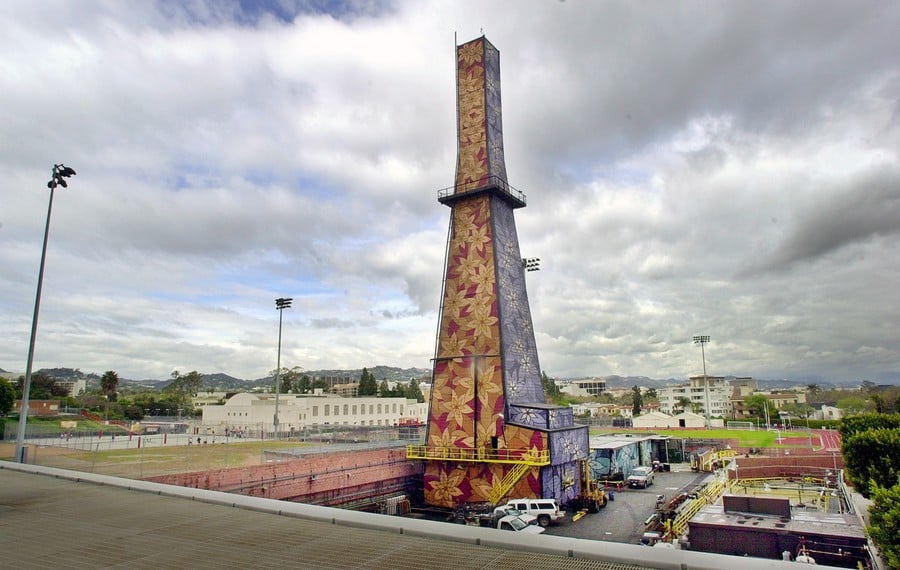Los Angeles is known to be the home of the stars. But did you know this posh city also contributed to the world’s oil supply?
Oil wells and rigs that still produce oil are still abundant in Los Angeles. They are usually hidden behind false buildings resembling towers, offices, and sometimes even synagogues. Others are concealed as islands.
Disguised Oil Rigs
The earliest recorded discovery of oil fields was in 1892. The discovery was credited to Edward L. Doheny, Sr. At the time, Doheny understood the importance of oil in the years to come, hence constructing an oil well in the field. Soon after, California was contributing nearly one-quarter of the world’s oil production.
A once small town of 50,000, Los Angeles grew to more than 1 million residents by 1930. There were also 200 oil companies and around 2,500 oil wells in the city. Fast forward to modern times, L.A. quickly transformed into a city of entertainment and began its modernization.
With it, many of the mining operations within the city were moved out, but a few remained in place. As the city is on top of an underground lake of petroleum, oil and gas wells can still be found all over the city. To date, there are over 50 wells disguised as buildings, and there are still pumpjacks that aren’t.
Most of the wells disguised are soundproof and have no roofs. Wells are located in every area of L.A., from parking lots of establishments, near schools, and even in some neighborhoods. (Source: Interesting Engineering)
Some Well Hidden Oil Wells in L.A.
L.A., known as the entertainment city of the country, crafts imaginative but believable illusions. And this is precisely what some oil companies did to hide away their oil wells, making it blend in the city’s landscape.
While some pump jacks are just fenced-in parking lots of establishments like Curley’s Cafe and McDonald’s in Signal Hill, other more complex operations are hidden away in elaborate fakes – fake buildings, bell towers, and even islands. (Source: 99 Percent Invisible)
Below are some examples of well-hidden oil wells in the city:
Packard Well Site
The site was built in 1967 along Pico in the Mid-Wilshire neighborhood. Its faux exterior looks like a windowless beige office building. The site houses 52 oil and gas wells owned by Sentinel Peak Resources.
Beverly Center
The site houses 54 wells and is conveniently located on the western side of the Beverly Center Mall, hidden only by tall walls and some foliage.
Tower of Hope
Located in Beverly Hills High, the 165-foot derrick was outfitted with vinyl, sound-absorbing sheath, and covered with floral paintings done by hospitalized children. The well-ceased operations in 2017 after its owner, Venoco, filed for bankruptcy.
Cardiff Tower
In the background of the Jewish enclave of the Pico-Robertson neighborhood is a site home to 40 wells. The site is made to look like a synagogue by its first owners, Occidental Petroleum. (Source: LA Magazine)
Astronaut Islands
Built in 1965, these four round islands measure 10 acres each. They were built as a beautification project to camouflage offshore oil derricks. Disneyland architect Joseph Linesch oversaw the construction. They were initially known as the THUMS Islands, named after the consortium that built them: Texaco, Humble, Union Oil, Mobil, and Shell. The islands are the only decorated oil islands in existence. (Source: Atlas Obscura)
